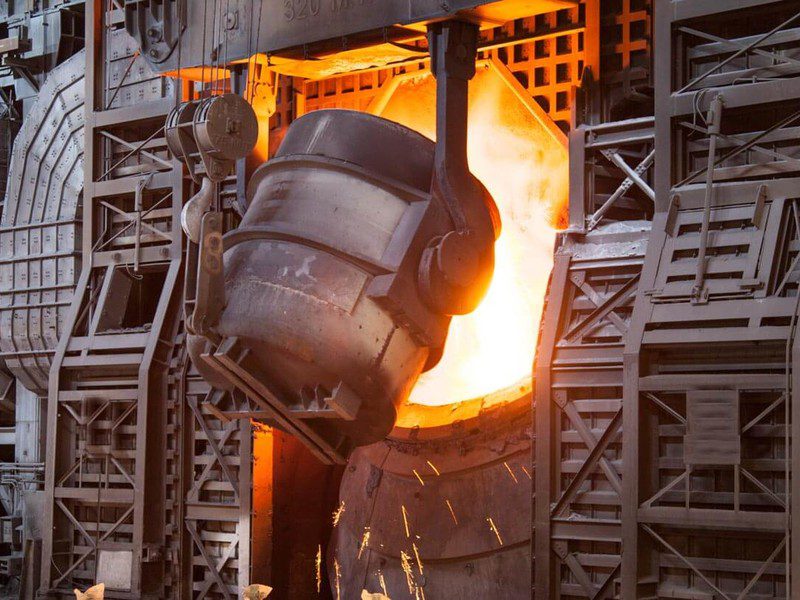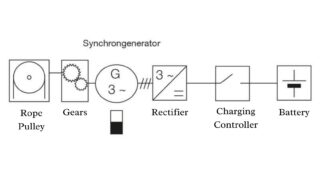
Heavy-duty generator DSG P reduces time and costs of maintenance on lifting beam in raw iron production
- Higher plant availability and productivity
- No need to change battery (previously every 14 days)
- Permanent power supply to the sensors ensures higher operating reliability
- Maintenance-free and long-lasting

System structure of the self-sufficient energy supply system for the sensors of the pig iron crane.

The energy for battery charging is generated from the lifting movement of the crane by a rotating sheave at the rope pulleys.
Task
Special safety sensors are installed in the laminated hooks to monitor if the pig iron ladles are securely attached. The sensors and a radio transmitter required to transmit the sensor signals are installed on the traversing gear of the crane system, and need to be powered by voltage of 12 VDC. Supplying power via a trailing cable is not an option, because the temperature of the pig iron in this area is about 1300 degrees Celsius. Consequently, power is supplied via a 12 V battery that is located on the traversing gear of the crane system. A solution that recharges the battery during operations is sought to avoid failures as well as downtimes resulting from the necessity to date of having to change the battery.
Solution
The permanent magnet three-phase synchronous generator DSG P 63.07.4 utilizes the rotating motion of the bullwheels of a lifting beam as a source of energy. The generator is driven via a rotating sheave and speed increasing gearbox with each lifting nd lowering motion of the crane. The generator supplies alternating voltage analogous to the speed; a rectifi er converts the AC voltage to DC voltage. The charge controller monitors the charge status and the fl ow of energy to the battery. Implementing an autonomous auxiliary power supply in the form of well-coordinated overall solution gains valuable production time and safeguards operational reliability. The previous solution of having to change the battery every 14 days is not required any more.

